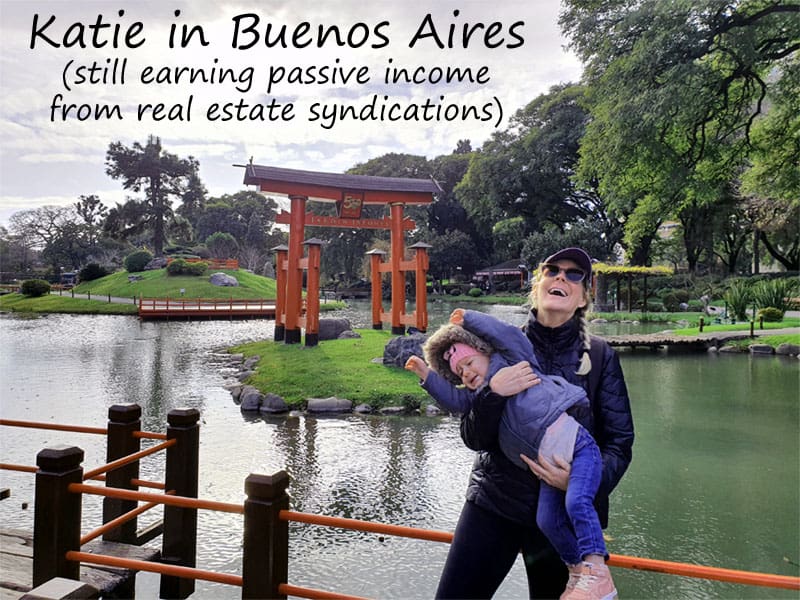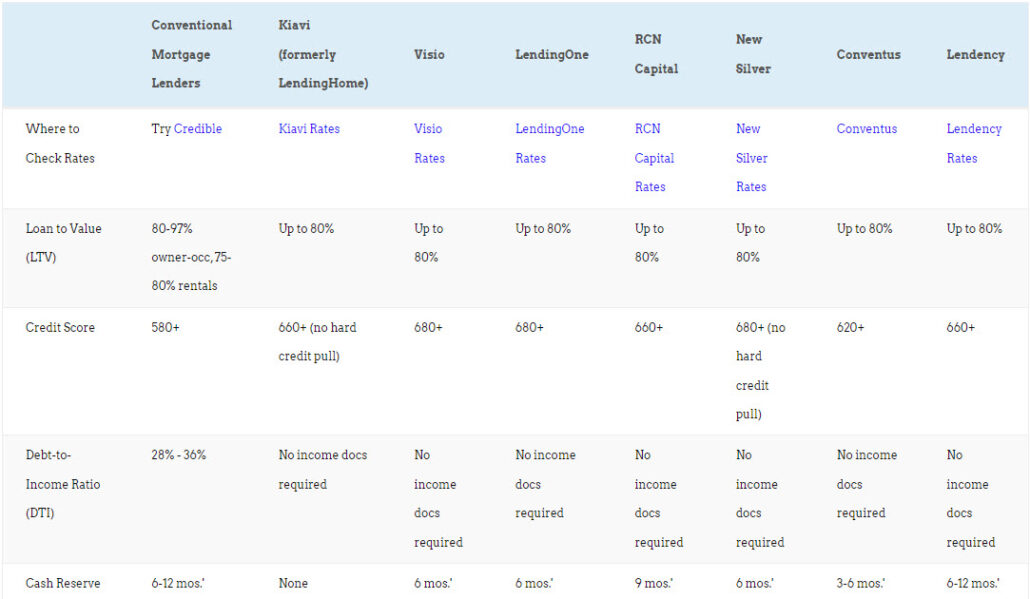
A few years ago, I sold all of my multifamily properties as well as a few of my single-family turnkey properties.
As I was getting ready to sell, I contacted Nate Busch, my CPA, and asked him how I could avoid the capital gains taxes on these assets. The market had done very well – and actually saved me from some mismanagement on the multifamily properties – so I had significant capital gains which meant I was looking at significant tax liabilities.
I thought I had two options for avoiding or deferring the tax: a 1031 exchange or an investment into a Qualified Opportunity Zone (QOZ).
Neither seemed attractive to me.
1031 Exchange
The 1031 exchange is an option that allows active real estate investors to sell a property and subsequently defer the taxes from capital gains and depreciation recapture as long as they buy a “like-kind” property within a certain timeframe that is of equal or greater value.
There are other obstacles in this process, including the need for a “qualified intermediary,” selling the old property, and identifying and buying the replacement property within the IRS guidelines. You can tweak it a little, such as doing a reverse 1031 exchange. It is a complicated process, but the result is that the capital gains and depreciation recapture are effectively transferred to the new property.
You can do this as often as you want, but you usually end up buying larger and larger properties because the ones you are selling generally appreciate in value. This would not work for me as I wanted to invest in real estate syndications, not invest actively in real estate anymore.
Qualified Opportunity Zones
The Qualified Opportunity Zone (QOZ) was a new program at the time that allowed you to defer paying taxes on any capital gains, including the sale of paper assets (stock market, mutual funds, etc.) or real assets (real estate, etc.).
If you bought a property in a neighborhood designated as a QOZ, you could defer the capital gains for ten years. A small amount of the original capital gains would be forgiven and any additional gains on the property would be tax-free if you held the investment for at least ten years.
To qualify, the property needed to be in a QOZ and the improvements to the property needed to be equal or greater than the purchase price.
Needless to say, this did not work for me as I did not want an active investment, and since the QOZ law had not been completely finalized, there were no passive investment opportunities at the time.
Solution: The Lazy 1031 Exchange
I talked about my reluctance to pursue either the 1031 or the QOZ with Nate, and he had two comments. First, he said, “Sometimes when you are fortunate enough to have made tremendous gains on an asset, you just have to suck it up and pay the taxes.”
He might have been right about that, but it wasn’t what I wanted to hear. Next, he said “Or because you are a passive investor in real estate syndications, you could just do a ‘Lazy 1031’ and not pay any taxes on your gains at all”. I didn’t know what he meant, but I liked the “lazy” part and the “not paying any taxes” part!
He went on to explain the “Lazy 1031”. I am a passive investor in real estate syndications, and many of those (especially multifamily apartments) come with significant tax benefits because of bonus depreciation and accelerated depreciation from cost segregation.
Bonus Depreciation & Cost Segregation
In short, bonus depreciation allows you to deduct much of the depreciation in the first year of an investment rather than over the entire expected life of the asset. Created by The Tax Cuts and Jobs Act of 2017, it’s scheduled to gradually phase out between 2023-2027. It may well get extended however, before it shuffles off this mortal coil.
Cost segregation is where the asset manager hires an engineering firm to analyze the property and to reclassify parts of the property into fsater depreciation rates. That allows you to take more depreciation over the first few years that you own the investment.
The bottom line is that bonus depreciation and cost segregation can give the asset and the investor a much larger paper depreciation loss in year one than they would otherwise have. This passive loss can be used to offset passive gains from real estate which can come from cash flow or capital gains.
However, when you take all of that depreciation in year one, you will eventually have to “recapture” the depreciation when you sell. Because of this, the strategy works best when you reinvest in new deals and start the cycle all over again.
Bonus Depreciation Example
If I bought a single-family home for $100,000 all cash and sold it several years later for $150,000, I would have a $50,000 capital gain.
Assuming that the property was used as a rental and my accountant used straight-line depreciation, I would have some depreciation recapture, but we will ignore that for simplicity in this example. If I do nothing, I will have to pay tax on the $50,000 gain. Assuming a 20% capital gains tax rate, I would pay $10,000 in taxes and be left with $140,000, including the original capital of $100,000.
However, if I took the $150,000 and invested it into a multifamily syndication that used bonus depreciation and cost segregation, I would show a paper loss in year 1.
For this example, we will assume the passive loss from bonus depreciation is 50%. I would have a $75,000 paper loss that would completely offset the $50,000 gain from the property I sold. I would also have $25,000 of passive loss that would carry over into subsequent years until it is used up.
If I received an 8% cash-on-cash return on this $150,000 investment, I would earn $12,000 per year. During the first two years of the investment, my cash flow would be tax-free because it would be offset by the $25,000 of carryover losses.
In this example, not only have I deferred the entire capital gain from the sale of my single-family home, I have also deferred paying tax on the cash flow from the first two years.
Each operator does cost segregation differently. Some deals have resulted in a 20% loss in year one and others much more – in fact, one of my investments of $50,000 resulted in a paper loss of $60,000 in the first year!
The Golden Hamster Wheel
The beauty of this approach is that it keeps on working as long as you keep investing – similar to a regular 1031 Exchange.
If the asset mentioned above sells after five years and my $150,000 investment returns to me a total of $300,000, I will have a capital gain of $150,000 and depreciation recapture of $75,000. If I take the $300,000 and invest it into another syndication in the same calendar year that utilizes cost segregation and gets a bonus depreciation of 50%, I will have a $150,000 loss that completely offsets the gain.
I would still have the $75,000 of depreciation recapture and I have two options. First, I could pay the tax on the recapture – this is paid at a 25% tax rate regardless of your marginal tax rate. Or I could have been investing in other syndications along the way, and I would have built up additional passive losses that could be used to offset the recapture. Some investors call this the “Golden Hamster Wheel”.
When starting out in passive real estate investing, it is common to build up quite a bit of passive loss that can be carried forward into future investments. The reason for this is that the gains generally come later.
Lazy 1031 Exchange Example
If you invest $100,000 in two syndications in the first year of your passive investing journey, you might have $50,000 of passive loss and only $8,000 of cash flow. If you invest $100,000 in each of the next two years in similar deals, you will have an additional $100,000 of passive loss and $16,000 in cash flow. After three years, you will have $150,000 of passive loss and $24,000 of passive income.
The $24,000 of cash flow is offset by some of your loss, leaving you with $126,000 of passive losses. These so-called, suspended passive losses can be carried forward indefinitely until utilized.
By the time some of your investments go full cycle and sell, you could have significant, unused passive losses that will offset those gains. This is what makes the strategy so powerful – just by investing in new deals, you continue to accumulate passive losses that can offset cash flow, capital gains and depreciation recapture in the future.
The upshot: If you continue to reinvest your gains into new syndications, you may continue to defer and reduce your taxes.
Critics often argue that depreciation recapture is a hidden tax that we ignore when we discuss the “Lazy 1031” strategy. But the truth is that much of the accelerated depreciation from bonus depreciation and the cost segregation is for items that have a shorter depreciation schedule. Because these items depreciate over a short time frame, you likely won’t have to recapture all of the original depreciation. Once that asset – carpet or paint, for example – has gone past its depreciation date, there will be nothing to recapture.
Simpler = Better
There are many ways to reduce or defer your tax liability when you invest in a tangible asset like real estate, but most are not as simple as the “Lazy 1031”. If you don’t want to meet the demands of an actual 1031 Exchange because you can’t meet the timing or you don’t want to continue investing actively, then the “Lazy 1031” might be an effective strategy for you.
The tax implications of real estate investing may be complicated, and everyone’s situation is certainly unique. I recommend you connect with a tax professional who owns real estate and has experience with many different types of real estate so that they can help you maximize your tax savings. It is important to find a professional you know, like and trust, and usually, the best way to do that is to find someone recommended by your community like Left Field Investors or by someone you know.♦
How do you reduce your taxes on real estate investment returns? How does a lazy 1031 exchange compare to your current real estate tax strategy?
This article originally appeared on LeftFieldInvestors.com and is republished here with the author’s permission.
More Real Estate Investing Reads:
About the Author




























I was always vaguely interested in 1031 exchanges but they always just seemed like too much work. This lazy 1031 exchange concept is much more practical for casual investors like me.
Agreed Shane!
It’s simpler and helps me reduce taxes effectively.
So true Martin!
I had no idea you could use bonus depreciation and cost segregation in this way to create a ‘Lazy 1031.’ It’s a brilliant tax-saving strategy for those of us who prefer passive real estate investments. Love it.
I’m with you 100% Jimmy!
I hadn’t considered this. Good stuff.
Glad to hear it was helpful Deb!
I’ve been considering different options for deferring taxes on my real estate gains, and this ‘Lazy 1031’ seems like a compelling approach.
Glad to hear it Glenn!